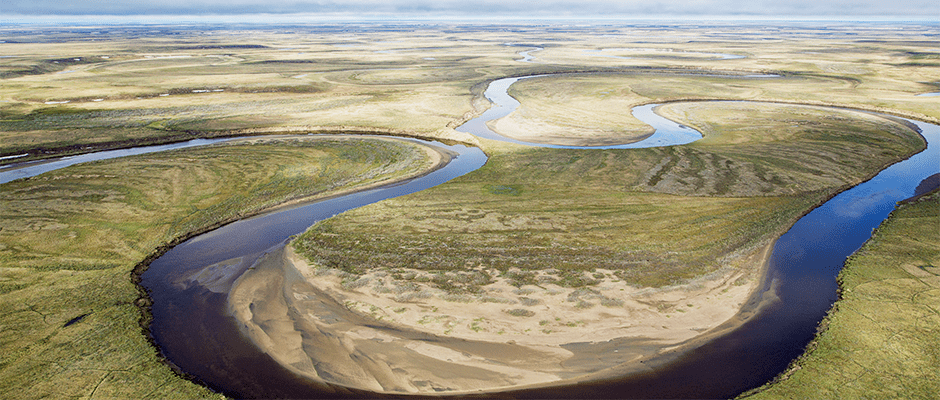Share this article
BLM offers 2.85 million acres in Alaska for drilling
The Bureau of Land Management is offering for lease 2.85 million acres in the National Petroleum Reserve-Alaska (NPR-A) next month. It will be the 14th lease sale there since 1999, when the BLM resumed leasing the area after a 15-year hiatus.
In 2017, Interior Secretary Ryan Zinke announced efforts to increase energy production within both NPR-A and the Arctic National Wildlife Refuge. In response, TWS contacted the BLM in February, asking that it balance increased energy development within NPR-A with the needs of wildlife.
A vast swath of federal land in northern Alaska, the NPR-A is the country’s largest tract of public land, at 23 million acres. In addition to significant oil and gas resources, it is home to unmatched wildlife, including two of Alaska’s large caribou herds, millions of migratory birds, globally significant densities of raptors and large concentrations of marine mammals, including beluga whales, polar bears, spotted seal and walrus. Under the Naval Petroleum Reserves Act of 1976, which transferred management of the reserve to the BLM, the Interior secretary must consider factors such as subsistence hunting, fish and wildlife habitat and scenic values as well as mineral and petroleum resources in the land’s management.
Nearly 200 active oil and gas drilling leases currently cover almost 1.4 million acres in the NPR-A, the sales of which generated over $282 million since 1999. Under the existing management plan for the reserve developed in 2013, about half of its 23 million acres are open for energy development. During last year’s lease sale, a record 900 tracts totaling over 10 million acres were offered but only seven bids were received, all from ConocoPhillips Alaska Inc., which owns almost all leases in the reserve. The last few years have seen increased exploration and development, mostly from ConocoPhillips, which is now producing the first marketable oil from the reserve.
TWS’ letter notes that “wildlife populations that reside in colonies or congregate seasonally in small areas in ecosystems of the far north could be stressed or displaced, not only from degradation of their habitats, but also from accelerated human disturbance. Thus, development of a petroleum industry in arctic regions must be implemented carefully to avoid or minimize rapid and perhaps irreparable damage to these unique and easily disrupted ecosystems.”
The state of Alaska also auctioned off oil and gas leases this month in the Beaufort Sea, on the North Slope and in the North Slope foothills. While the North Slope foothills auction did not garner any bids, 141 tracts across the Beaufort Sea and North Slope generated $28.1 million in high bids. This is an increase over last year’s lease sale, when Alaska generated a total of $21.2 million in high bids.
Read TWS’ position statements on energy development and land management.
Header Image: The BLM is opening 2.85 million acres in the National Petroleum Reserve-Alaska to energy development. ©BLM Alaska








